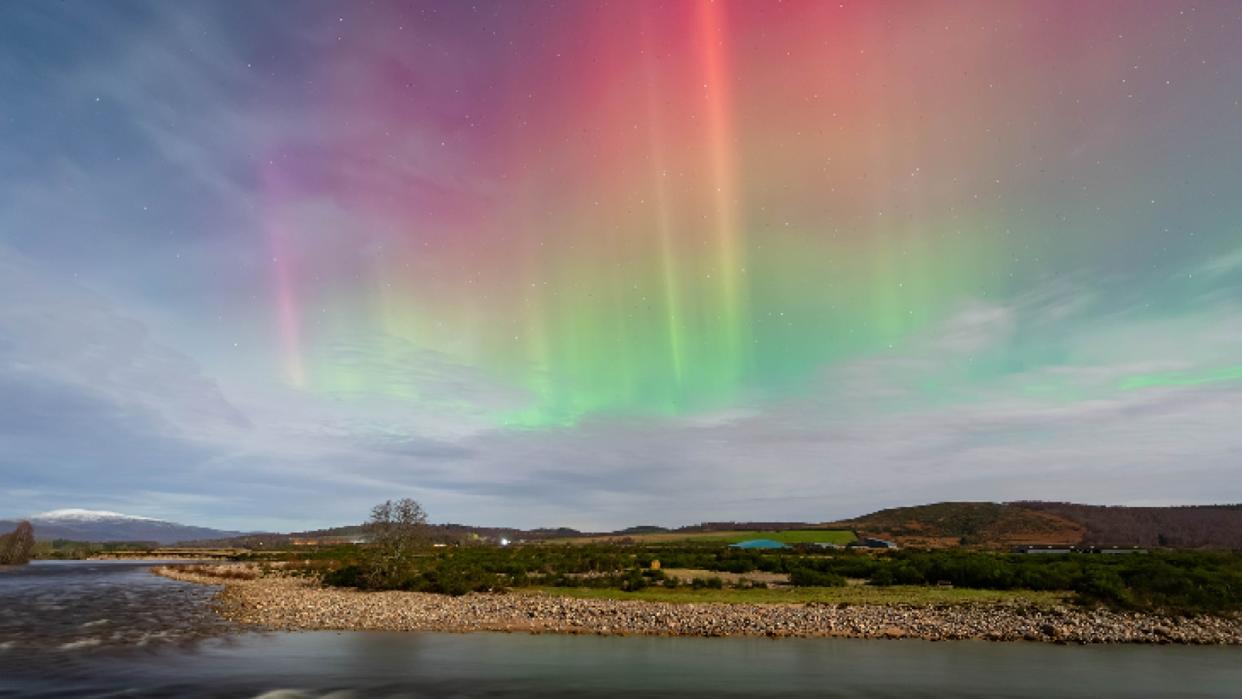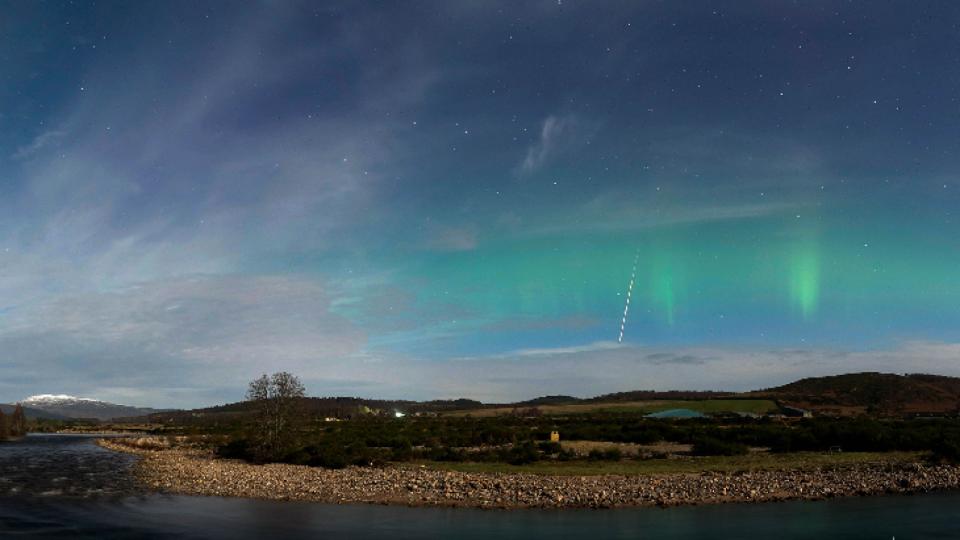'Impossible' orange auroras spotted in UK after solar storm slams into Earth

Rarely seen orange auroras, which are supposed to be impossible to see, and a photobombing meteor recently shone above the U.K. after a "canyon of fire" solar storm smashed into Earth, stunning new images reveal.
Photographer Graeme Whipps spotted the fiery auroras in the skies above Aberdeenshire in Scotland at around 6:00 p.m. local time on Nov. 25, Spaceweather.com reported.
The unusual hues were an "incredible sight," Whipps told Spaceweather.com. They appeared during a peak of auroral activity that lasted for around one hour, he added. Whipps also snapped a meteor that streak across the sky at another point during the lightshow.
The auroras were part of a minor (G2) geomagnetic storm — a disturbance in Earth's magnetic field, or magnetosphere — that was triggered by a fast-moving cloud of magnetized plasma, known as a coronal mass ejection (CME), which smashed into Earth just before the auroras appeared.
The CME launched from a massive loop of plasma, or solar prominence, which snapped and flung off into space, leaving behind a massive valley in the solar surface known as a "canyon of fire." A similar fiery chasm was left behind by a solar eruption on Halloween.
Related: 10 bizarre phenomena that lit up the sky (and their scientific explanations)

Auroras appear when high-energy particles from CMEs or solar wind bypass the magnetosphere and superheat gas molecules in the upper atmosphere. The excited molecules release energy in the form of light. The color of that light depends on which element is being excited and where in the sky they are located.
The two most common aurora colors are red and green, which are both given off by oxygen molecules at different altitudes. Red auroras are produced at higher altitudes than their green variants. When the solar particles penetrate deep into the atmosphere and excite nitrogen molecules, they can trigger rare pink auroras.
related stories
—Massive 'proton aurora' blasted a 250-mile-wide hole in Earth's ozone layer
—'Unreal' auroras cover Earth in stunning photo taken by NASA astronaut
Theoretically, both oxygen and nitrogen molecules can give off faint orange wavelengths under specific conditions. However, even when this happens, the unusual color is overwhelmed by greens and reds, making it practically impossible to see these wavelengths.
Instead, the orange hues in the new image are caused by red and green light mixing. This only happens when vertical bands of red and green auroras perfectly overlap, making them very rare.
The unusual orange hues also appeared recently seen during a separate geomagnetic storm in Canada on Oct. 19.

